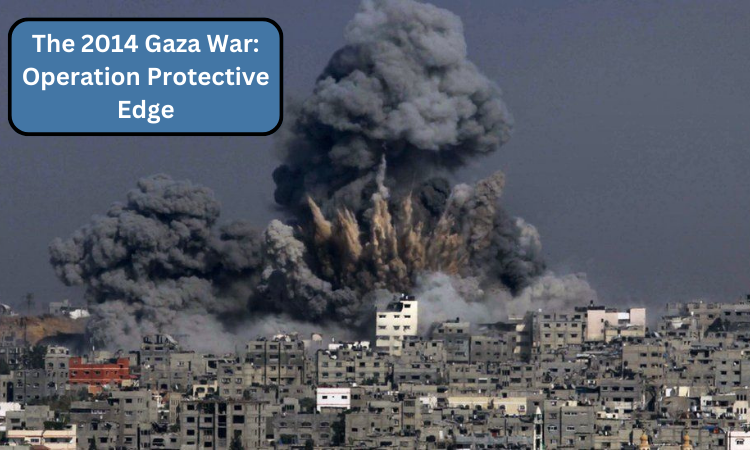
The 2014 Gaza War, also known as Operation Protective Edge, was a seven-week armed conflict that took place in the summer of 2014 between Israel and Hamas. The roots of this confrontation can be traced to the complex history and tensions between Israel and the Palestinians, especially in the Gaza Strip. The war resulted in significant casualties on both sides, with many civilians losing their lives.
To understand the 2014 Gaza War, it's essential to note the broader geopolitical landscape. Following the Six-Day War in 1967, Israel had occupied the Gaza Strip, but in 2005, the Israeli government unilaterally disengaged from the region, evacuating all Jewish settlers and military installations. However, Israel retained control of Gaza's borders, airspace, and coastline, with the exception of the Rafah crossing into Egypt.
In 2007, Hamas, an Islamist political and military group, took control of the Gaza Strip after winning elections in 2006 and subsequently clashing with Fatah, its political rival. From that point onward, the Gaza Strip faced an economic blockade by both Israel and Egypt, severely affecting its economy and infrastructure.
Abduction and Murder of Three Israeli Teens: In June 2014, three Israeli teenagers were kidnapped and subsequently murdered in the West Bank. Israel blamed Hamas for the incident, though Hamas denied responsibility. Israel responded with Operation Brother's Keeper, arresting many Hamas members in the West Bank.
Retaliatory Murder of a Palestinian Teen: In a purported act of revenge for the murder of the Israeli teens, a group of Israelis abducted and killed a Palestinian teenager from East Jerusalem.
Rocket Fire from Gaza: Throughout June, there was an increase in rocket fire from Gaza into Israel. While some were launched by smaller militant factions, Israel held Hamas responsible for all rockets emanating from Gaza.
On July 8, 2014, Israel launched Operation Protective Edge, with the stated aim of halting the rocket fire from Gaza and destroying Hamas' underground tunnel infrastructure. The operation can be divided into several phases:
Aerial Bombardment: The operation began with extensive aerial bombardments targeting Hamas leaders, infrastructure, and other military targets. In response, Hamas and other militant groups in Gaza fired rockets into Israel, reaching as far as Tel Aviv, Jerusalem, and Haifa.
Ground Invasion: On July 17, Israel launched a ground invasion focused on destroying tunnels used by Hamas for infiltration and attack. The Israeli Defense Forces (IDF) encountered significant resistance from Hamas fighters.
Ceasefires and Negotiations: Multiple attempts were made to broker a ceasefire, with Egypt playing a central role. Temporary halts in fighting were agreed upon but were frequently short-lived.
The war had a devastating impact on the civilian population of Gaza. According to the United Nations, more than 2,100 Palestinians were killed, of which approximately 1,500 were civilians, including over 500 children. On the Israeli side, 67 soldiers and six civilians, including one child, were killed.
Dense urban environments in Gaza made it difficult to distinguish between militants and civilians. The IDF stated that Hamas used human shields, placing military infrastructure in or near schools, hospitals, and residential buildings. Conversely, human rights organizations criticized Israel for some of its tactics, suggesting they might constitute war crimes.
The war left much of Gaza's infrastructure in ruins. Thousands of homes were destroyed, displacing a significant portion of the population. Rebuilding was slow, given the blockade and limited resources.
The conflict also had political ramifications. While Hamas claimed victory by surviving the Israeli onslaught and securing some concessions in the ceasefire, its popularity in Gaza was tested by the immense destruction and loss of life. Internationally, the war led to increased scrutiny of both Israel and Hamas, with calls for investigations into potential war crimes.
The 2014 Gaza War, or Operation Protective Edge, stands as a testament to the ongoing and deep-seated tensions between Israel and Palestinian groups, particularly Hamas. The conflict left a lasting mark on both sides, reminding the world of the fragile situation in the region. A genuine resolution seems elusive, but the war underscores the urgent need for a lasting peace agreement that addresses the core issues and concerns of both parties.